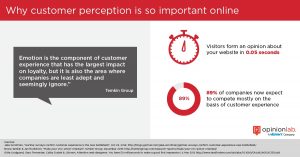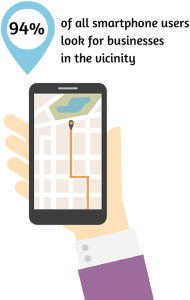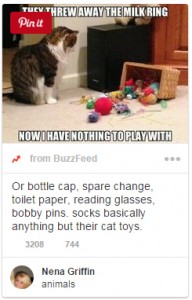Now, this won’t be the first blog post you’ve seen about the merits of interactive video, and it certainly won’t be the last. 2018 is set to be the year that interactive video really comes of age.
“But what’s been the hold-up?” I hear you ask. Well, it’s not that the technology hasn’t been there, we’ve had that in the bag for the past 7 years, and the technology that lines the pockets and trouser legs of every man, woman and child across the connected world hold the technical capability.
The trusted smartphone has a lot more to offer and marketers are only really scraping the surface repurposing their content from TV, social and beyond. The future of the connected screen is upon us and we’re here to join the dots, for everyone. Actionable video is the future and these 6 pointers should help set you on the path to engaging with your customers again:
1. Interactive functionality turns passive viewers into engaged customers
It doesn’t take much imagination to grasp this concept, especially if you’ve seen an interactive video before. For those who have not, try this on for size. Chances are you’ve seen one before – however, if the creator did a bad job you may not have even noticed it was interactive in the first place (sigh!)
Educating your audience is key, therefore it’s imperative you invite your users to lean in. Offering animated visual cues as the video begins playback will help prepare people to engage effectively, resulting in far more engaged users and a higher chance they’ll take the action you designed for them.
It’s reported that those working in offices/online businesses can be exposed to 4,000 pieces of content every single day, so it’s safe to say competition is high. Remember, currently, people are tuned out to a lot of these due to the sheer onslaught of online video vying for their attention. Facebook recently announced it’s making a big change to how it surfaces video content from advertisers/marketers to try and win back trust in its users. Interactive and shoppable media gives marketers the chance to make the creative work for them, bringing them richer context, and experience every click, tap and touch of the way.
2. Interactive brings your products and services to life like never before
Once again your products can feature in your videos. No longer will users be frustrated by the inability to buy your products as they appear in their feeds and creative agencies won’t be trying to convince you to remove your product from the video altogether. Think about it, if you want to sell a new pair of shoes via a video, it would make sense that they feature pretty heavily. Better still, what if that video allowed a potential customer to select a color, size and buy the shoe… before the video had even finished? That is the future of video-powered commerce and aptly known as shoppable video. If you sell products, you need shoppable video in your strategy. Ted Baker was recently featured in the February 2018 Forrester report entitled Make Your Video Shoppable To Boost Online Conversion. They were involved in a campaign (produced by Guy Ritchie and powered by WIREWAX) to engage with customers online. That campaign resulted in a huge uptick in sales (+30%) for the British fashion brand.
3. The value exchange is way higher than conventional video
Nb. This statement is only true as long as the marketer respects the rules. If you take advantage of the technology and litter your video with too many shoppable links that negatively impact the users’ experience, you might as well have not bothered. We all remember the heady days of ad-stacking and those pesky display ads you couldn’t close. Let’s not go there again. We’ve got a chance to make the digital ecosystem great again. One that works for all parties involved.
4. Video has broad appeal but the kids love interactive
Millennial audiences are exceptionally hard to reach and engage. Advertisers value this impressionable audience so much that they’ll do whatever it takes to reach them. Even if it means spending vast sums of cash on ads that disappear (or did) on the popular ephemeral messaging app. The problem with non-interactive media is, when you finally do get their attention, boring, traditional content disappoints and can often have the opposite effect to the one intended.
5. Interactive video empowers marketers to entertain again
In a time when trust in advertising is at an all-time low and the proliferation of ad blockers appears to have hit heady heights, it’s time for marketers to rethink before they send the next brief out for yet another stale video creative. However, you don’t just need to take my word for it, trust Keith Weed and Marc Pritchard, arguably the kings of marketing from two of the world’s largest brands; both have made this year the time for a change and you should too. Storytelling isn’t a new concept, but try pairing it with creative interactive execution and you’re on to a winner. Take your customers by the hand and show them the best you.
6. Recycle. Creativity can also be about making the marvelous out of the discarded
Yes, we live in a disposable society and most marketers wouldn’t take well to the advice to scrap their creative masterpieces and start again all in the pursuit of the next big thing.
Well, rest assured that’s not an essential part of the criteria. There’s life in your good content yet. One of the beauties of interactive video is it brings new dimensions to conventional video. As well as simply enriching content and making it work harder, you can easily make every product in your video shoppable from right there within the video. It’s not necessarily about starting again, but thinking differently.
Make your own interactive video today
This post originally appeared on WIREWAX.com
Digital & Social Articles on Business 2 Community(35)
Report Post







